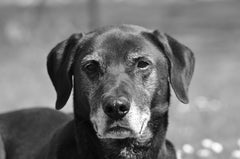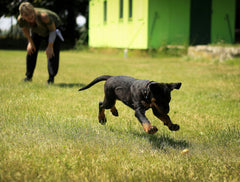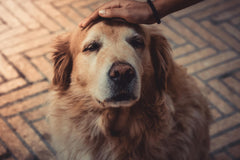
Did you just adopt a new puppy and are now wondering when should be the first-time grooming puppy? You’re not the only one wondering this! Many new puppy owners wonder when the best time is to begin hygiene and grooming routines with their little pal. Or, depending on the breed of puppy that you’ve adopted, when the first time a puppy haircut might be needed.
If you are planning to take care of a majority, if not all, of your puppies grooming needs, there are a few things you will need to know before beginning a grooming routine with your new puppy. These need-to-know things include what sort of grooming needs your puppy has, and how to execute them without traumatizing your puppy or harming them in anyway. Grooming your new puppy, when the time is right, is a great way to bond with them and set the foundation for a lifelong friendship.
How and When Do I Begin Grooming My Puppy?
The best age to start grooming your puppy on a regular basis is typically around 10-12 weeks of age. You can begin to prepare them at a younger age, by getting them used to being handled. You’ll want to touch and massage areas such as their legs, feet, and especially ears on puppies with longer coats of fur.
This preparation time will want to be done outside of the time you spend playing and training with your puppy as well, so that they don’t get the two confused. Always be sure to reward your puppy with an extra special treat after these sessions as well.
Have Playtime Before Grooming
Anyone who has ever owned a puppy or raised a toddler knows that trying to bathe a young one that is still so full of playful energy is a nearly impossible task. This is why you will want to engage your puppy in some of their favorite playtime activities before even trying to get them on board with some grooming. Playtime helps to facilitate happy puppy grooming, as they will be tired and more willing to relax and enjoy the special attention.
Use the Right Tools for Grooming
Each breed of puppy has specific grooming needs, so it’s important that you are using the right tools for their grooming. For instance, for puppies with thick fur coats you will want to use a wide-toothed comb, whereas with puppies who have thin fur you will want a fine-toothed comb.
Some other important supplies that you will want to have on hand include shampoo, dental care items, and even some ear cleaning supplies. Some of these cleaning supplies you will need to work with your puppy in order for them to get used to them, such as dental care. But starting young really helps with this process.
Bathing and Dental Hygiene
For puppies that are under three months old, you will just want to take a damp rag to their fur rather than fully submerging them and using cleansers. This will help the young pup become prepared for the bathing process that you will use when they are a little older. Once your puppy is old enough for a real bath, you will want to use lukewarm water and a shampoo that is formulated for dogs specifically being sure to avoid their eyes, nose, and ears.
Dental hygiene is another thing you will need to help acclimate your puppy to when they are young. You can do this by gently massaging their teeth and gums during the relaxing time you spend working on desensitizing them to bathing and grooming. As far as equipment that you should use for puppy dental hygiene, you can get a puppy toothbrush and toothpaste from most pet stores. You should never use human toothpaste with your puppy, as some of the ingredients can be fatally toxic to them.
Know Your Dog’s Body Language
Grooming should not be a stressful or traumatizing process for your puppy or you. Be sure you are keeping mental tabs on your puppy's body language as you go through the grooming process, to make sure that they are not too scared or uncomfortable. Failing to notice these changes in their body language could lead to you being accidentally bitten or making this process something difficult between your puppy and you in the long run.
Conclusion
Grooming your puppy should be a stress free, bonding experience for you and your new pal. With it being such a new experience for them it might take some time for them to get used to the process and become comfortable with grooming, but as their owner there are steps you can take to help them along with becoming comfortable with grooming.
Using the right equipment and grooming techniques are important steps in this process if you have your mind set on grooming your puppy yourself at home. Be sure to get the right brushes and combs and learn the right techniques for caring for your puppy’s fur, and you and your puppy will be golden!





Comments
Thank you for all the information you have posted online.